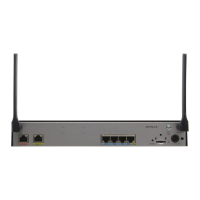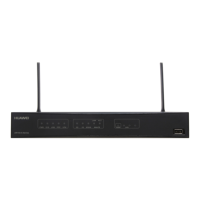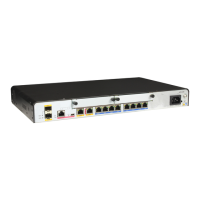7 STP/RSTP Configuration
About This Chapter
The Spanning Tree Protocol (STP) trims a ring network into a loop-free tree network. It prevents
replication and circular propagation of packets, provides multiple redundant paths for virtual
LAN (VLAN) data traffic, and enables load balancing. The Rapid Spanning Tree Protocol
(RSTP) was developed based on STP to implement faster convergence. RSTP defines edge ports
and provides protection functions.
7.1 STP/RSTP Overview
STP/RSTP is used to block redundant links on Layer 2 networks and trim a network into a loop-
free tree topology.
7.2 STP/RSTP Features Supported by the AR3200
Before configuring STP/RSTP, familiarize yourself with basic STP/RSTP functions, topology
convergence, STP/RSTP protection, and STP/RSTP interoperability between Huawei devices
and non-Huawei devices.
7.3 Configuring Basic STP/RSTP Functions
STP/RSTP is used to block redundant links on Layer 2 networks and trim a network into a loop-
free tree topology.
7.4 Configuring STP/RSTP Parameters on an Interface
STP does not have a mechanism to confirm topology convergence, whereas RSTP provides a
feedback mechanism to implement rapid convergence.
7.5 Configuring RSTP Protection Functions
This section describes how to configure RSTP protection functions. You can configure one or
more functions.
7.6 Maintaining STP/RSTP
STP/RSTP maintenance includes clearing STP/RSTP statistics.
7.7 Configuration Examples
This section describes the networking requirements, configuration roadmap, data preparation,
and procedures for some typical application scenarios for STP/RSTP. This section also provides
the related configuration files.
Huawei AR3200 Series Enterprise Routers
Configuration Guide - LAN 7 STP/RSTP Configuration
Issue 02 (2012-03-30) Huawei Proprietary and Confidential
Copyright © Huawei Technologies Co., Ltd.
181

